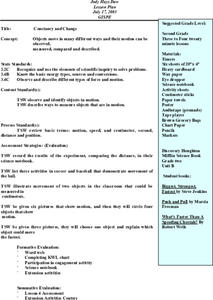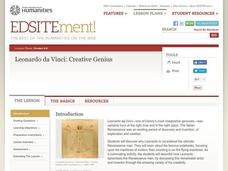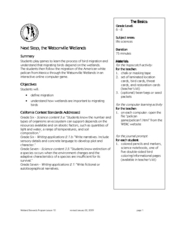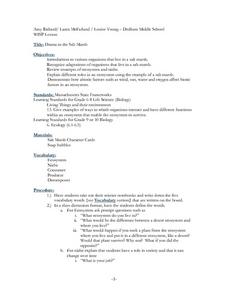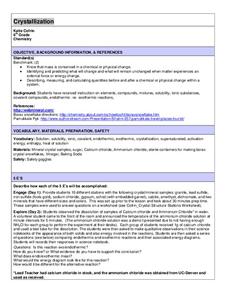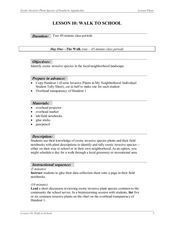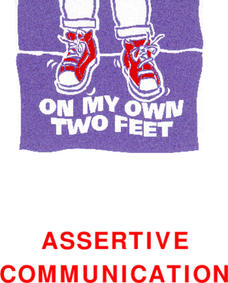Curated OER
Soil Layers
Ninth graders identify the different layers of soil. In this earth science lesson, 9th graders explain how limestone layers are formed. They identify the different parts of the coral colony.
Curated OER
How Does Meiosis Lead To a Fetus?
Students discuss the stages of meiosis. In this life science lesson, students create an illustration of each stages. They write a short story about a character that went through meiosis.
Curated OER
Constancy and Change
Second graders investigate how objects can move in different ways. They move in different ways across the room and develop a class list of movement words. Students also conduct a measuring motion experiment, create a bar graph for the...
Curated OER
Leonardo da Vinci: Creative Genius
Young scholars examine how Leonardo da Vinci exemplified the Renaissance period. They explore various websites, conduct Internet research, complete a chart, explore virtual da Vinci notebooks, and write an essay.
Curated OER
Photosynthesis Cookies
Students identify photosynthesis as a process through which organisms make their own food. They practice the process for writing the formula for the photosynthesis equation.
Students describe how the processes of photosynthesis and...
Curated OER
Soil Types
Fifth graders examine how sand and rock fragments in soil are products of erosion or the weathering of rocks. They listen to the book "Sand" by Ellen J. Prager and answer discussion questions. Next, they analyze sand samples and sort...
Curated OER
Hands-On Investigation!
Students read, analyze, and solve a mystery using problem-solving skills. They explore the History Detective website, discuss the difference between clues and red herrings, complete a dot-to-dot sheet, take notes in a detective...
Curated OER
Testing for Vitamin C in Different Drinks and Foods
Students examine the importance of vitamin c in their diets and the sources that it comes from. In this vitamin lesson students complete hands on activities, interpret data and make a bar graph.
Curated OER
Next Stop, the Watsonville Wetlands
Middle schoolers study bird migrations and the importance of wetlands. In this migration lesson students play a game and complete a computer activity.
Curated OER
Food Chains
Fourth graders study food chains, producers, consumers, and decomposers. They play a food chain game and create food chain mobiles or posters. They take a nature hike around the school and observe various parts of a food chain.
Curated OER
Properties of Water
Students study the three physical properties of water-solid, liquid and gas. They classify materials as solids, liquids, and gases. They define the terms solids, liquids and matter and explain that when materials are manipulated,...
Curated OER
A Line Graph of the Ocean Floor
Students develop a spreadsheet and import the information into a line graph. In this spreadsheet and line graph lesson plan, students develop a spreadsheet of ocean depths. They import the information into a word processed document. They...
Curated OER
Drama in the Salt Marsh
Students are introduced to the various organisms that live in a salt marsh. They recognize adaptations of organisms that live in the salt marsh. Pupils review concepts of the ecosystem and niche. Students explain the different roles...
Curated OER
Weather Forecast
Learners forecast the weather. In this weather lesson, students are assigned a day to give the weather forecast. Learners write a script and video their weather forecast.
Curated OER
Adopt a Tree
First graders describe the characteristics of a tree. In this science instructional activity, 1st graders create predictions about a book they will be listening to, Have you Seen Trees. Additionally, students describe their trees using...
Curated OER
People Are Like Peas in a Pod
Students experiment with pea pods to observe/appreciate the diversity of individuals within a population, and to explain of how dominant and recessive traits, genotypes, and phenotypes help produce variation in a population.
Curated OER
How Are Clouds and Fog Formed?
Fifth graders investigate how clouds and fog are made of tiny droplets of water. They discuss how clouds and fog are formed, then conduct an experiment in which they observe what happens when an ice cube is placed on top of a bottle...
Curated OER
Crystallization
Eighth graders analyze physical change in mass. In this chemistry lesson, 8th graders describe, measure and calculate the amount of physical change occurring in mass before and after the change. Students should be familiar with elements,...
Curated OER
Studying Birds in the Field
This is a well-designed science activity which helps students learn the behavior of different species of birds. Working with partners and in small team, students learn to scientifically observe birds.
Curated OER
Understanding Estuaries
Students work together to develop their own estuarine ecosystem in an aquarium. They observe the aquarium daily and record them in a notebook. They discuss the different interactions they see with the class.
Curated OER
Walk To School
Students recognize invasive plant species. They use their field notebooks with plant descriptions to identify and tally exotic invasive species either on their way to school or in their own neighborhood.
TCI
What Are the Biggest April Fools Jokes of All Time?
After working in groups to analyze primary sources related to a historical hoax, learners will discuss how people managed to be fooled and work to identify one of the biggest April Fools jokes in history.
Department of Education (Ireland)
Assertive Communication
Assertive communication is an acquired skill. Teaching young people to ask for what they need and to believe that they have a right to ask is at the core of a unit on assertive communication. Over the course of the unit, middle and high...
West Contra Costa Unified School District
The Power of Ten: Building a Magnitude Model
Add visual representation to teaching place value with a magnitude model. Using adding machine tape, pupils build a linear place value strip from 1 to 100.




